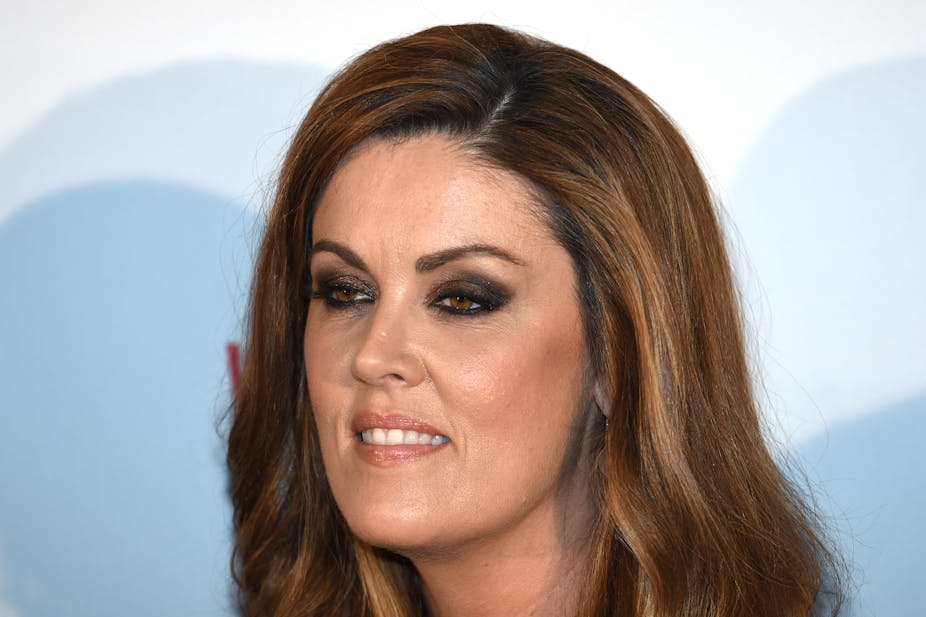Peta Credlin, former chief of staff to the former prime minister, has remained high-profile and defiant to the end.
Despite her changed circumstances Credlin went ahead with a panel discussion at Tuesday’s Women’s Weekly Women of the Future event. In one of those “oops” misfortunes that sometimes happen in publishing, Credlin also tops the Weekly’s list – printed before the leadership change but only out Thursday – of the 50 most powerful women in Australia.
Just as the Weekly could not change its list to accommodate a new reality, Credlin had not altered (at least publicly) her perceptions.
She did not seem to accept any responsibility for the demise of her leader despite taking much credit for getting him into office. And she portrayed herself as something of a victim, targeted especially because she was a woman.
“If I was a guy I wouldn’t be bossy, I’d be strong. If I was a guy I wouldn’t be a micro-manager, I’d be across my brief, or across the detail,” she said. “If I wasn’t strong, determined, controlling, and got them into government from opposition I might add, then I would be weak and not up to it and should have to go and could be replaced. So it’s very binary when it comes to women.”
Tony Abbott used to say if Peta were Peter, she would be treated differently. More likely is that if Peter had behaved as Peta did, he would have received a kicking too.
Whatever element of sexism there might have been in Credlin’s problems, it does not alter the facts about her flaws of leadership and management.
She threw her weight around and bullied people. She encouraged a them-and-us tribal approach. She alienated people rather than drawing them closer to Abbott.
She was everywhere, often very visibly, whether it was in the expenditure review committee, fundraisers, picture opportunities abroad, and on all sorts of other occasions. She spent much more time on the road with the prime minister than chiefs of staff usually do. And at meetings outside the Prime Minister’s Office she talked too much.
She says she never wanted a profile, the photographs, the attention. “I wanted to make my contribution to public life behind the scenes. And it didn’t sort of turn out that well.” Even allowing that she was destined to get above average attention for a PM’s chief of staff, some of the spotlight was her own choice (epitomised by her acceptance, before the coup, of the invitation for Tuesday), and a great deal of it resulted from how she operated.
Within the government team her controlling grip became notorious from the start, whether it was over appointments to ministers’ staff, ministerial media appearances, or a host of other things. She was scornful during the panel of those who might have felt browbeaten. “If you’re a cabinet minister or a journalist and you’re intimated by the chief of staff to the prime minister, maybe you don’t deserve your job.”
To which one might say: Peta, you don’t get it.
A savvy chief of staff – at least in government – does not overuse the iron fist and on the occasions when they do need to bring it into play, they make sure the velvet gloves are on.
Politicians, whether ministers or backbenchers, are status-conscious animals. They are aware who is elected and who is staff. Even more important, they have an acute instinct for survival. They may be stood over for a while, but eventually they react. When many Liberal MPs fired a salvo at Abbott in February, one of their major complaints was about Credlin.
They resented her interference and her gate-keeping. They wanted her gone then; instead she just became less visible for a while, as though she believed she could game them. But they were wise to her. When the word started to get around among ministers, MPs and staff some months ago that “Credlin is back” – not that she had ever gone – it was the canary in the mine, a sign Abbott was in trouble again.
As for the journalists, stories have emerged of her allegedly trying to get people sacked or suggesting, after a report displeased her, that she knew so and so in a media organisation. She masterminded the strategy of selective briefing. A chief of staff adopting this approach should be good at cost/benefit analysis: will the resentment generated outweigh the advantages?
It was understandable that the Abbott office was suspicious of Malcolm Turnbull – though the handling of him was inept – but why would Credlin get into a test of strength with Julie Bishop? Bishop is as tough as Credlin. Ultimately Abbott would need Bishop more than she needed him. A skillful chief of staff would have developed a good relationship with Bishop and facilitated closeness between her boss and and his Liberal deputy.
On Tuesday Credlin pursued a theme we’ve heard from her before – the need for more women in politics and positions of power. Yet how was it, given her enormous influence with Abbott, that he put only one women in cabinet initially – a misjudgment that caused him grief immediately?
Credlin told the audience: “People say to me, ‘you’re really lucky to have the best job in the country’, and I was like ‘there’s no luck involved, I worked my guts out for six years to go from opposition to government.’ 5am in the morning, really late nights, huge pressure and it’s relentless”.
No-one doubts Credlin’s extraordinary dedication to the job and to Abbott’s cause. But it’s not just the effort that counts – it’s the outcomes. And as she also said, “you’ve got to own what you are and own what you do”. Once in government, Credlin’s KPI was to help a successful opposition leader become an effective prime minister. She flunked that, and instead her behaviour became a contributing factor in his downfall.

